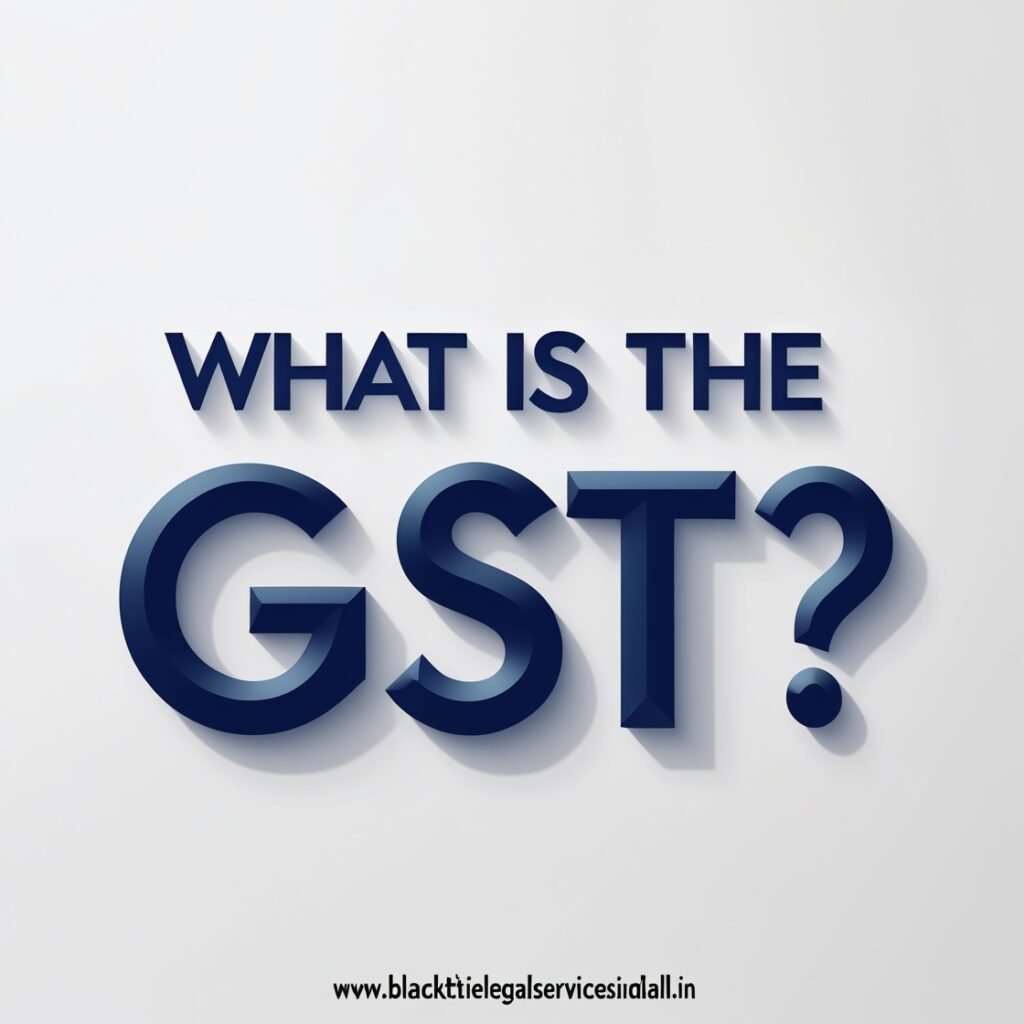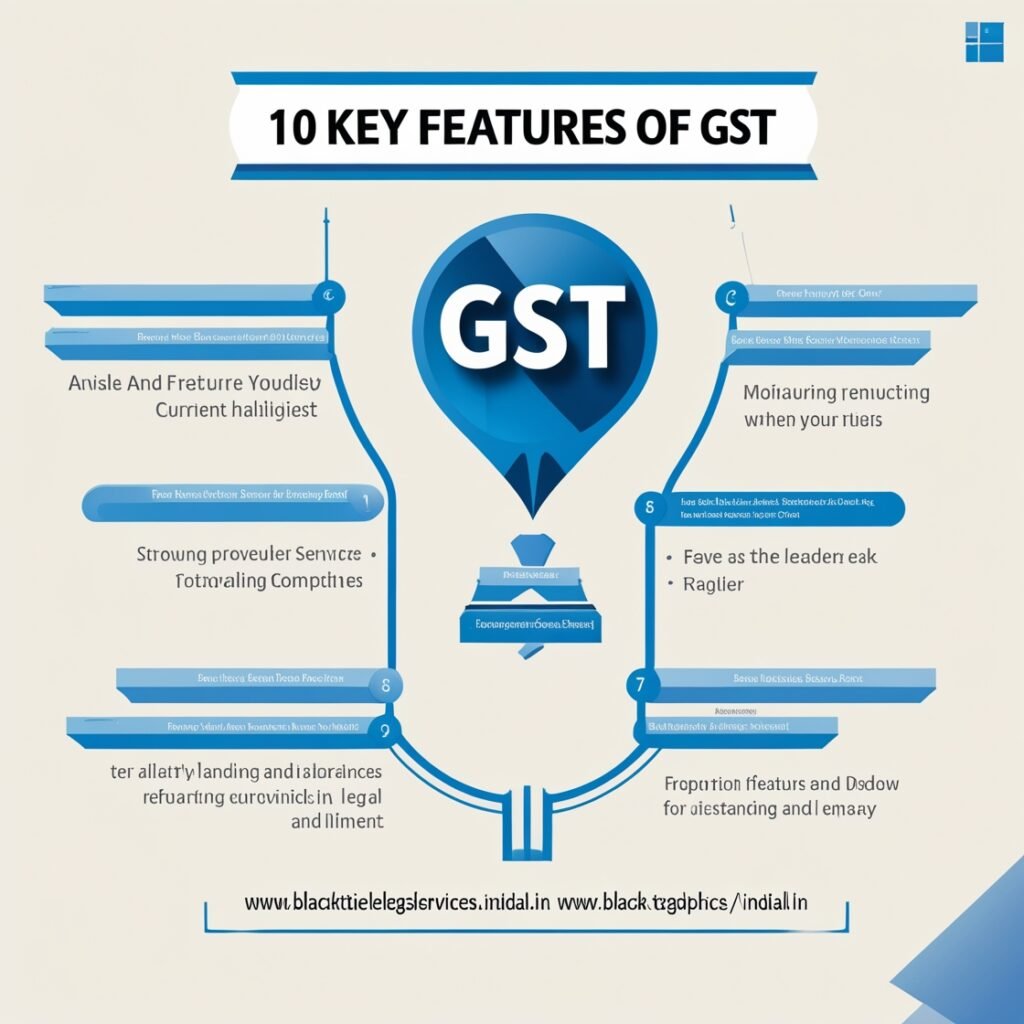Goods and Services Tax (GST) has revolutionized the Indian taxation system since its introduction. This indirect tax has replaced a plethora of cascading taxes and unified the country into a single market.
But what makes GST such a game-changer? In this blog post, we delve into the salient features of GST that make it one of the most transformative tax reforms in India’s history.
Whether you’re a business owner, a student, or just someone curious about how GST impacts everyday life, this guide will provide you with a detailed, engaging, and comprehensive understanding of its key features.
Get ready to explore:
- How GST works and why it’s a unified tax system
- The benefits of input tax credit
- The impact of GST on various sectors
- How GST simplifies compliance and boosts transparency
This isn’t just another tax blog; it’s a journey into the workings of GST, presented in a way that’s easy to understand, engaging, and worth every second of your time. Dive in, and by the end, you’ll be a pro at understanding the salient features of GST!
- What is the GST?
- What are the Core Salient Features of GST?
- Input Tax Credit (ITC)
- Composition Scheme
- Destination-Based Tax
- Additional Tax
- Removal of Cascading Effect
- Single Indirect Tax
- Better Tax Compliance
- One Nation, One Tax
- Threshold Exemption
- A Uniform Tax Structure
- Anti-Profiteering Measures
- Government Revenue
- GST Identification Number (GSTIN)
- Higher Compliance
- Online Compliance
- Relief in Overall Tax Burden
- Service Tax
- Transparency
- Unified Market
- Boost to Economic Growth
- Compensation to States
- Competitive Advantage
- Defined Treatment for E-Commerce
- Easy Compliance
- Comprehensive Indirect Tax
- Dual GST System
- Consumption-Based Tax
- Multiple Tax Slabs
- Unified Tax System
- Comprehensive Tax on Goods & Services
- Elimination of the Cascading Tax Effect
- Enhanced Productivity of Logistics
- Online Procedure
- Four-Tier Rate Structure
- Applicability of GST
- GST Composition Scheme
- Increased Economic Activity
- Simpler Tax Regime
- What are the 10 Features of GST?
- In Conclusion
- FAQs
What is the GST?

Goods and Services Tax (GST) is a comprehensive, destination-based indirect tax system introduced in India on July 1, 2017. It replaced multiple cascading taxes like VAT, excise duty, and service tax, creating a unified tax structure.
GST operates under a dual system, with Central GST (CGST) and State GST (SGST) for intra-state transactions and Integrated GST (IGST) for inter-state transactions.
It simplifies compliance through an online platform and promotes transparency while reducing the overall tax burden. GST aims to boost the economy by streamlining the tax process and ensuring uniformity across the nation.
What are the Core Salient Features of GST?

We have mentioned all the aspects of GST in a very good manner for you all, is mentioned below, along with that below them we have also mentioned all the information of each and every feature in brief:
- Input tax credit
- Composition scheme
- Destination-based tax
- Additional tax
- Removal of cascading effect
- Single indirect tax
- Better tax compliance
- One nation, one tax
- Threshold exemption
- A uniform tax structure
- Anti-profiteering measures
- Government revenue
- GST Identification Number
- Higher compliance
- Online compliance
- Relief in overall tax burden
- Service tax
- Transparency
- Unified market
- Boost to economic growth
- Compensation to states
- Competitive advantage
- Defined treatment for e-commerce
- Easy compliance
- Comprehensive indirect tax
- Dual GST system
- Consumption-based tax
- Multiple tax slabs
- Unified tax system
- Comprehensive tax on goods & services
- Elimination of the cascading tax effect
- Enhanced productivity of logistics
- Online procedure
- Four-tier rate structure
- Applicability of GST
- GST composition scheme
- Increased economic activity
- Simpler tax regime
Input Tax Credit (ITC)
One of the core features of GST is the seamless flow of input tax credit across the supply chain. Businesses can claim credit for the GST paid on purchases, reducing the overall tax burden. This feature eliminates inefficiencies and promotes transparency in the taxation system.
Composition Scheme
The composition scheme under GST is designed to ease compliance for small taxpayers. Businesses with an annual turnover below a specified threshold can opt for this scheme, paying a fixed percentage of turnover as tax. This feature reduces paperwork and simplifies tax obligations for small enterprises.
Destination-Based Tax
GST is a destination-based tax, meaning the tax revenue is collected by the state where the goods or services are consumed, rather than where they are produced. This system ensures fair distribution of tax revenues and benefits consumption-heavy states.
Additional Tax
In the earlier tax regime, states levied additional taxes to protect their revenues. Under GST, an additional tax on supply was abolished, creating a unified market and eliminating barriers to interstate trade.
Removal of Cascading Effect
GST eliminates the cascading effect of taxes, where tax is levied on tax. By subsuming multiple indirect taxes into a single tax, GST ensures that businesses only pay tax on the value added at each stage, reducing the overall tax liability.
Single Indirect Tax
GST has replaced a complex web of central and state taxes with a single indirect tax, making compliance easier and fostering a business-friendly environment.
Better Tax Compliance
With features like online filing, input tax credit, and strict penalties for non-compliance, GST encourages better tax adherence among businesses.
One Nation, One Tax
GST embodies the concept of “One Nation, One Tax,” ensuring a uniform tax rate across the country. This feature has eliminated disparities and created a level playing field for businesses nationwide.
Threshold Exemption
Small businesses with a turnover below a specific threshold are exempt from GST registration. This exemption reduces the compliance burden for micro and small enterprises.
A Uniform Tax Structure
GST provides a uniform tax structure by subsuming central and state taxes like excise duty, VAT, and service tax. This simplification benefits businesses and consumers alike.
Anti-Profiteering Measures
To prevent businesses from pocketing the benefits of reduced tax rates, the GST framework includes anti-profiteering measures. These measures ensure that tax benefits are passed on to consumers.
Government Revenue
GST has broadened the tax base, bringing more businesses into the formal economy. This increased compliance has contributed significantly to government revenue.
GST Identification Number (GSTIN)
Every registered taxpayer under GST is assigned a unique GST Identification Number (GSTIN). This 15-digit number facilitates tracking and ensures accountability in tax payments.
Higher Compliance
GST mandates businesses to maintain accurate records and file regular returns. The structured compliance system has improved tax collection and reduced evasion.
Online Compliance
The entire GST process, from registration to return filing, is conducted online. This digitization simplifies compliance and reduces paperwork.
Relief in Overall Tax Burden
By eliminating multiple indirect taxes and providing input tax credit, GST reduces the overall tax burden on businesses and consumers.
Service Tax
Under GST, the service tax is integrated with other indirect taxes, simplifying the tax structure for service providers and ensuring uniformity across sectors.
Transparency
The GST framework promotes transparency through features like e-invoicing, GSTIN tracking, and audit trails. This transparency builds trust among taxpayers and the government.
Unified Market
GST has created a unified national market by removing barriers to interstate trade. Businesses can now operate seamlessly across states, fostering economic growth.
Boost to Economic Growth
The implementation of GST has streamlined taxation, improved compliance, and encouraged investment, contributing to overall economic growth.
Compensation to States
To address concerns of revenue loss, the central government compensates states for any shortfall in GST collections. This arrangement ensures cooperative federalism.
Competitive Advantage
A uniform tax structure under GST reduces the cost of production, giving Indian businesses a competitive edge in global markets.
Defined Treatment for E-Commerce
GST provides a well-defined framework for the e-commerce sector, ensuring transparency and accountability in tax collection at source (TCS).
Easy Compliance
The simplified tax structure and online processes under GST make compliance easier, especially for small and medium enterprises (SMEs).
Comprehensive Indirect Tax
GST is a comprehensive tax that applies to the supply of goods and services, ensuring a seamless flow of tax credits and reducing redundancies.
Dual GST System
India follows a dual GST model, where both the central and state governments levy GST on goods and services. This ensures equitable revenue sharing.
Consumption-Based Tax
GST is levied at the point of consumption rather than production. This approach ensures that the tax burden is distributed equitably.
Multiple Tax Slabs
GST features multiple tax slabs to accommodate the diverse nature of goods and services. The slabs include 0%, 5%, 12%, 18%, and 28%, ensuring affordability for essential goods.
Unified Tax System
The GST system unifies various indirect taxes, creating a cohesive and streamlined tax regime.
Comprehensive Tax on Goods & Services
GST applies to both goods and services, ensuring uniformity and simplifying the tax structure.
Elimination of the Cascading Tax Effect
GST eliminates the tax-on-tax phenomenon, reducing the overall tax burden on goods and services.
Enhanced Productivity of Logistics
By removing interstate checkpoints and reducing paperwork, GST has improved the efficiency of logistics and supply chains.
Online Procedure
The digitized GST framework offers online registration, return filing, and tax payments, reducing manual intervention and improving efficiency.
Four-Tier Rate Structure
GST features a four-tier rate structure to cater to different economic needs, balancing revenue generation and affordability.
Applicability of GST
GST applies to all businesses engaged in the supply of goods or services, except those under specified exemptions or composition schemes.
GST Composition Scheme
This scheme allows small taxpayers to pay a fixed tax rate based on turnover, reducing compliance and tax liability.
Increased Economic Activity
The streamlined tax system under GST has encouraged formalization, boosting economic activity and investment.
Simpler Tax Regime
GST has simplified the tax structure by consolidating various indirect taxes, making it easier for businesses to comply and grow.
What are the 10 Features of GST?

Here are the 10 key features of GST (Goods and Services Tax):
- Dual Tax Structure: GST operates on a dual system with Central GST (CGST) levied by the Central Government and State GST (SGST) levied by State Governments for intra-state transactions, while Integrated GST (IGST) is applied for inter-state transactions.
- Destination-Based Tax: GST is a consumption-based tax where the tax revenue is collected by the state where the goods or services are consumed, not where they are produced.
- Comprehensive Taxation: It subsumes multiple indirect taxes such as VAT, service tax, excise duty, entry tax, and luxury tax into a single unified tax.
- Elimination of Cascading Effect: GST allows for the seamless availability of Input Tax Credit (ITC), reducing the “tax-on-tax” effect and lowering the overall tax burden.
- Standardized Tax Rates: GST categorizes goods and services into predefined tax slabs (0%, 5%, 12%, 18%, and 28%), ensuring uniformity in taxation across the country.
- Composition Scheme: Small businesses with an annual turnover up to ₹1.5 crore can opt for the Composition Scheme, which allows them to pay a fixed percentage of turnover as tax, simplifying compliance.
- Online Compliance: GST compliance is fully digital, enabling online registration, return filing, and tax payment through the GST Network (GSTN), promoting efficiency and transparency.
- Anti-Profiteering Measures: Businesses are mandated to pass on the benefits of reduced tax rates or input tax credits to consumers, ensuring fair pricing.
- Zero-Rated Exports: Exports are considered zero-rated under GST, meaning no tax is levied on exported goods and services, and exporters can claim refunds for input taxes.
- E-Way Bill System: GST includes an electronic waybill (e-way bill) system to monitor the movement of goods and reduce tax evasion during transportation.
Also Read: Features of GST
In Conclusion

The salient features of GST have not only simplified taxation but also contributed to India’s growth story. From eliminating cascading taxes to promoting transparency, GST has redefined how businesses operate in the country.
Whether you’re a budding entrepreneur or a seasoned business owner, understanding these features will empower you to make informed decisions and stay compliant with India’s tax laws.
So, what’s your takeaway from GST? Share your thoughts in the comments below!
FAQs
Q1. What are the salient features of composition scheme under GST?
Designed for small taxpayers with turnover below a threshold, it allows paying tax at a fixed rate and filing quarterly returns, reducing compliance burden.
Q2. What are the salient features of service tax?
Levied on services, it was indirect and collected by service providers before being replaced by GST, ensuring uniformity in service taxation.
Q3. What are the features of composition?
Simplified compliance, fixed tax rates, quarterly returns, and limited eligibility based on turnover make it business-friendly for small enterprises.
Q4. What are the types of GST?
Central GST (CGST), State GST (SGST), Integrated GST (IGST), and Union Territory GST (UTGST) cover various aspects of taxation in India.
Q5. Who introduced GST in India?
GST was introduced in India by the Narendra Modi-led government on July 1, 2017, after years of deliberation.
Q6. What are the objectives of GST?
To create a unified tax system, eliminate cascading taxes, simplify compliance, promote transparency, and boost economic growth.


Add a Comment